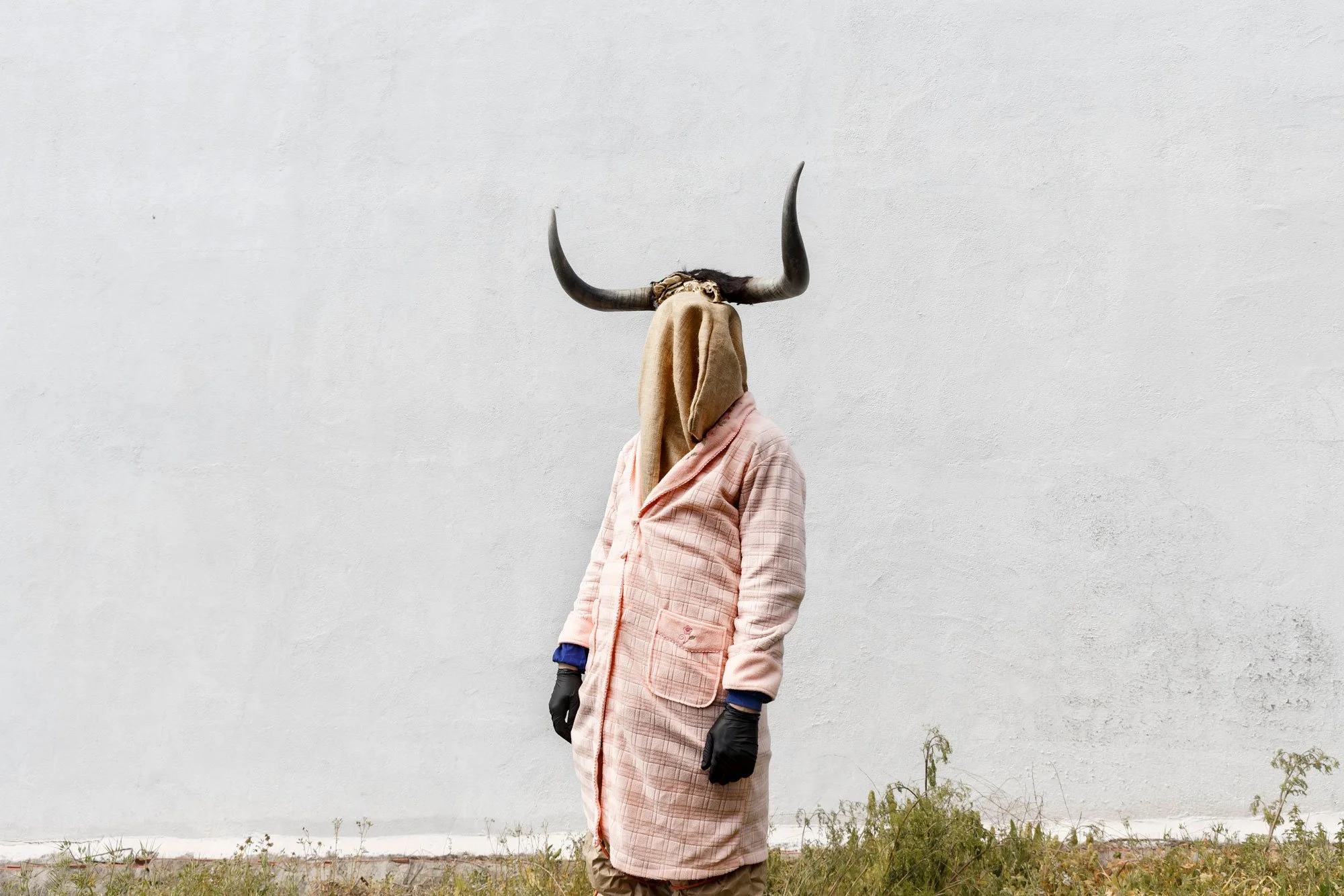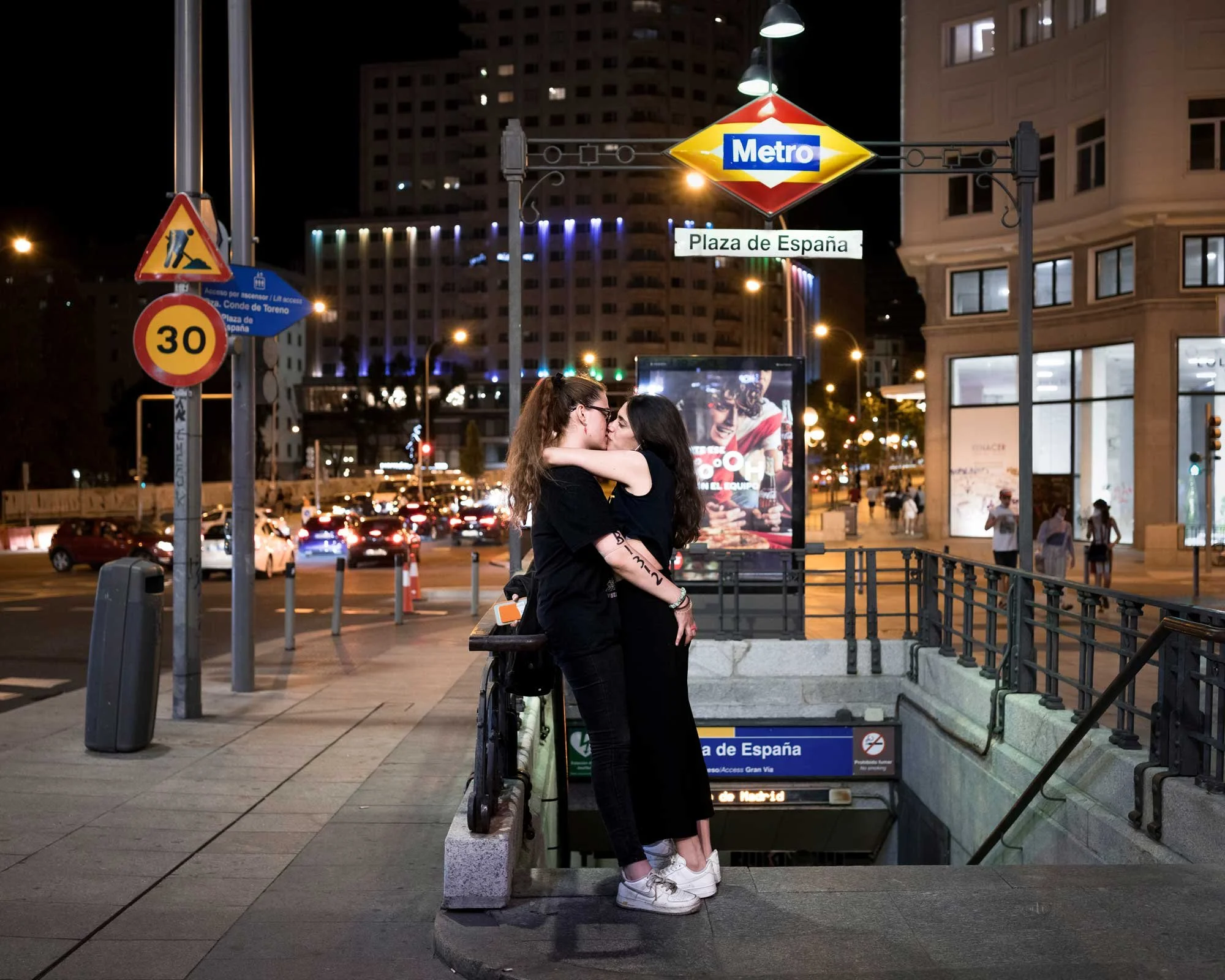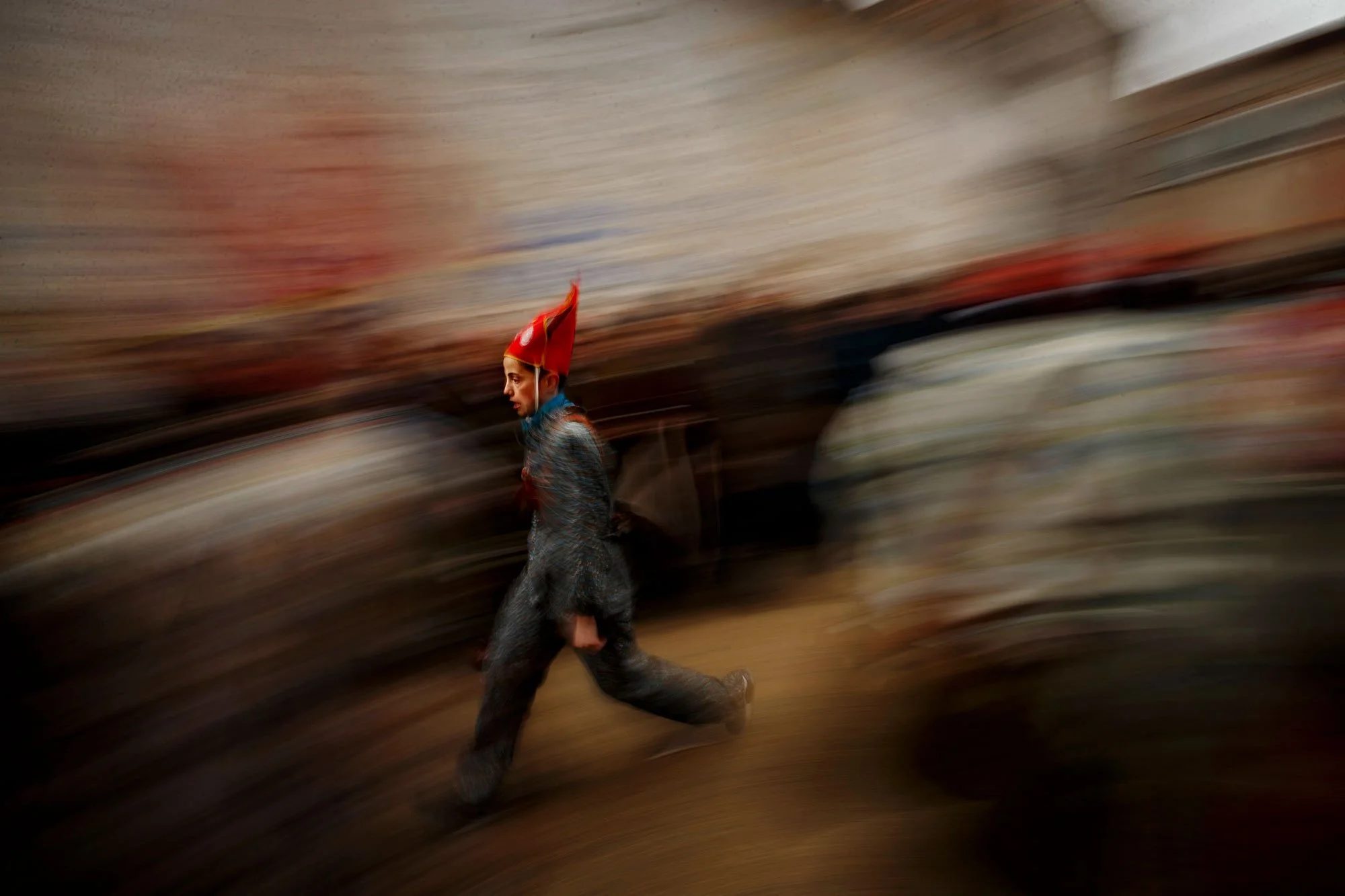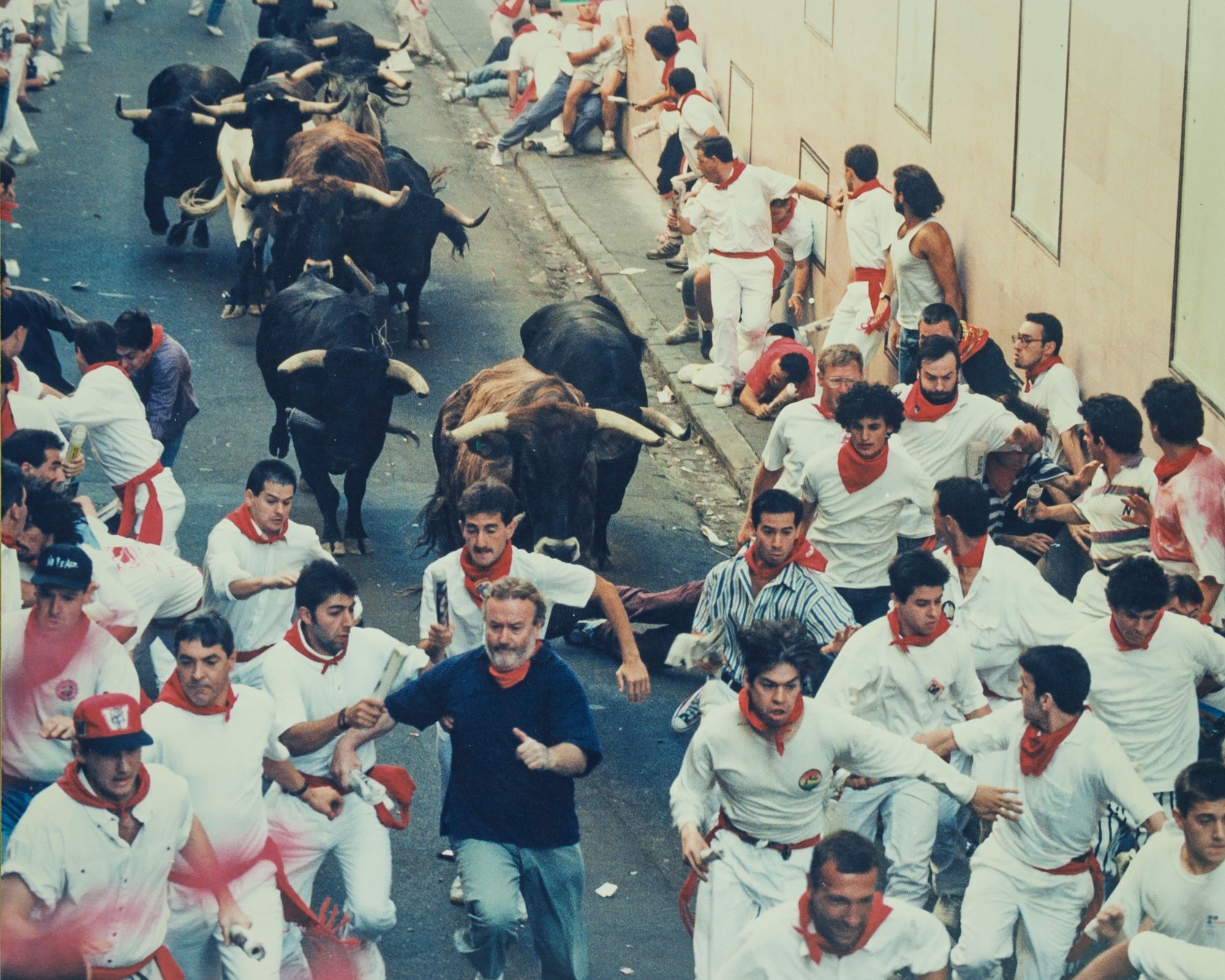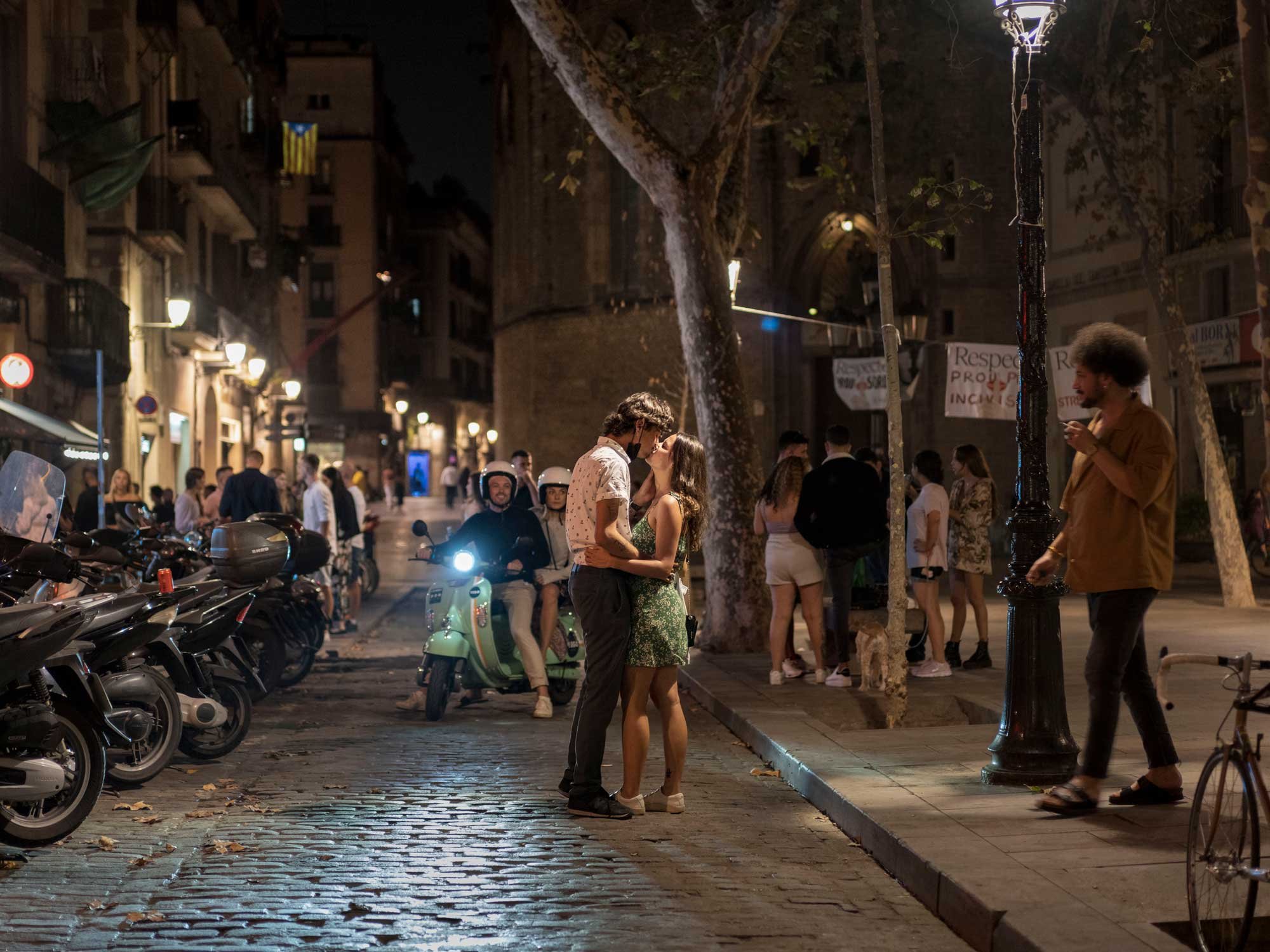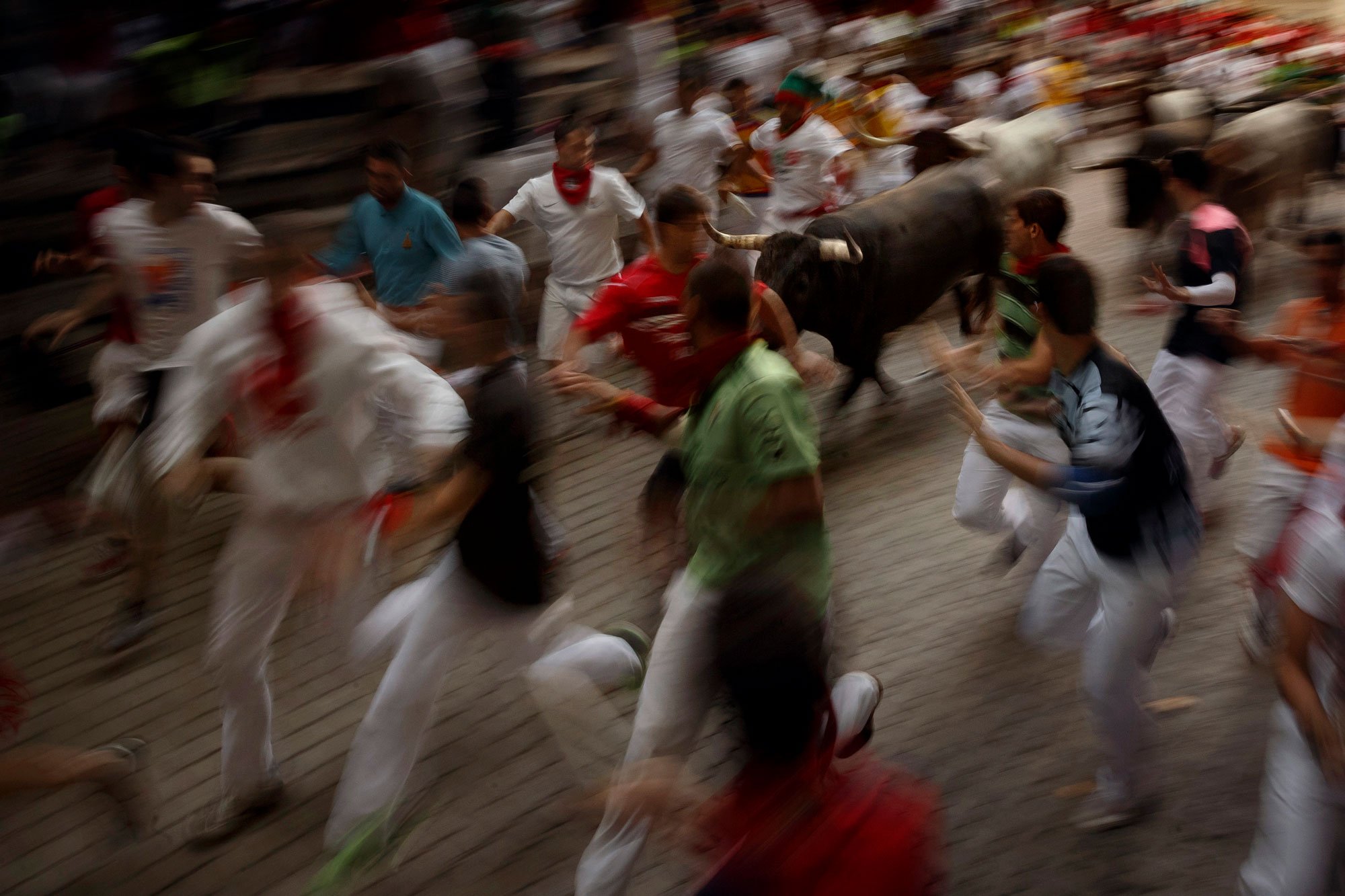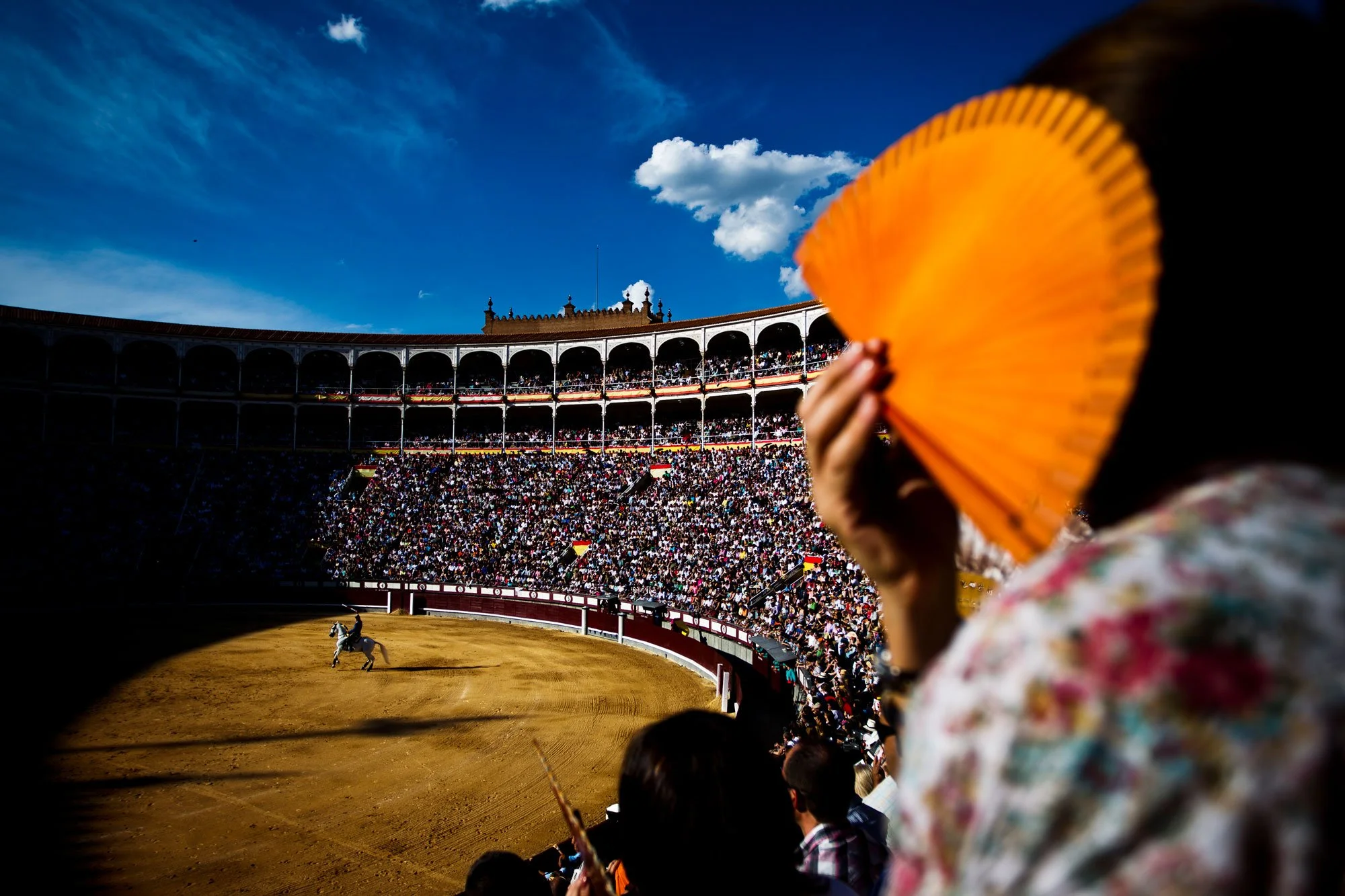Daniel Ochoa de Olza - Title Needed
HM: So Daniel, let’s begin at the beginning. I know you’ve given many interviews about your work, but what HOT MIRROR is truly interested in is the person behind the lens—the individual, the story, the formative experiences. That’s what really fascinates us. So tell me: where did you grow up, and what kind of world did you grow up in?
DOO: I was born and raised in Pamplona, in Navarra, in northern Spain. I came into the world in 1978—so not exactly during the war, but in a time when Spain was still emerging from the shadows of dictatorship. The Basque conflict was ongoing, so I grew up in a politically tense environment, with violence, fear, and uncertainty never too far away. But honestly, more than the political climate, it was my family that shaped me. That had a much deeper and lasting influence.
My family wasn’t “normal”—at least not in the conventional sense, whatever that means. My father was extraordinary. He held doctorates in journalism and law, and he studied psychology and sociology too. He was a prolific writer—he published 14 books and literally thousands of articles and opinion pieces. But that’s just the intellectual side of him. He was also a master in martial arts—judo, karate, Aikido—you name it. He even represented Spain in a European championship in Germany and lived in Paris in ’68. He was a man of remarkable range. If you could divide his mind and talents between his four sons, we’d each still have more than most.
HM: That’s astonishing—like growing up with a Renaissance man.
DOO: Exactly. And when you’re a child, you don’t quite realize how exceptional it is. He was just “Dad.” But the depth of culture at home was incredible. My mother, too, was a university professor. She taught history, geography, and art. So there was always this intellectual and artistic energy surrounding us. It wasn’t forced—it was just in the air we breathed.
Language was part of that too. My father spoke English, French, German, Italian, Latin, Greek… I honestly never sat down to “learn” English. I absorbed it at home, playing with strange books and listening to conversations in all sorts of languages. It was a wonderfully eccentric, liberating environment.
HM: And you were the youngest?
DOO: Yes, the youngest of four brothers. Each of them took radically different paths. My oldest brother studied philosophy but left academia to become a mountaineer—one of the best in the world. He climbed peaks on every continent and lived like a monk, with very different values from the world around him. No interest in money, no attachment to material things. He was a philosopher in every sense, even when risking his life at high altitudes.
He died in 2008 on Annapurna, one of the world’s most dangerous mountains—over 8,000 meters high. He collapsed at around 7,500 meters. There was a huge rescue attempt, the first of its kind on that mountain. A film, a book, and a documentary were made about it. His death was devastating for our family—especially for my father, who could never truly process the loss. He developed Alzheimer’s shortly after and passed away seven years later.
HM: That’s heartbreaking. But also, what an extraordinary legacy your brother left behind.
DOO: Yes. He was a legend. Another of my brothers is an artist—a painter. But not just that. He has four kids, living in two different countries, and he runs a robotics company. Believe it or not, he’s developed robots that can paint. I mean actual painting—not just industrial—but artistic work too.
HM: So your family is like a constellation of creators, thinkers, adventurers…
DOO: That’s a beautiful way to put it. Yes, I was surrounded by people who believed deeply in what they were doing, who pursued life with intensity and imagination. It gave me a strong internal compass, I think. Photography for me is not just a profession—it’s a way of connecting to that legacy, to that sense of meaning and exploration that I inherited from them.
HM: Daniel, can you tell us about winning the world press photo?
DOO: The first time I won a World Press Photo, the first thing I did was call my father and say, “I finally made it.” Growing up in my family was a gift—but also a challenge. We love each other deeply, but my father is incredibly sharp. If you ever think you’re clever with words, he’ll humble you in seconds. If you’re good at sports, well, he’s a professional athlete. If you lean into the arts—same story, you’re still in his shadow.
I think that environment, while full of love, made me humble. It also gave me a deep respect for people with "normal" jobs—engineers, lawyers—because in a way, I was surrounded by so many high-achieving artists and thinkers that I never considered a traditional path.
HM: So, you were a young rebel?
DOO: Not at all. I never really fit in. I was that kid who stared out the window instead of at the blackboard. They actually kicked me out of school once. They made us take an intelligence test, and I scored a 145. Afterward, the psychologist—who I didn’t even know existed in the school—called me in and said, “We know you're not stupid.”
Which was confusing, honestly. Like, so before the test, you thought I was? And then they said something really strange: “You’re too smart to be here; you might bring down our average.” So they kicked me out. Just like that.
HM: That’s surreal. What did you do next?
DOO: I had no plan. I started doing what I liked at the time—fixing bicycles. Then I became a juggler. Not a great one, but a juggler. Later, a magician—also not great! Eventually, I became a swimming instructor and a lifeguard. For the first time, I started making a bit of money.
I wasn’t saving, so I thought: What’s something I can buy that will last? Something I could pass on one day to my kids. At first, I thought: maybe a good watch. But then I remembered my older brother Pablo had a camera, and I figured… maybe a camera is what I need.
HM: So buying that camera was a turning point?
DOO: Completely. At the time, I was either working at the pool or hanging around the skate park with my friends. One of my friends also got a camera. We had no idea how to use them, so we signed up for a short workshop at a tiny photo association in Pamplona. They taught us the basics—how a camera works, how to develop black-and-white film. Nothing creative, just the technical foundation.
HM: What came next?
DOO: One day, that same friend said, “Tomorrow I’m going to take the entrance exam for the Artistic Photography school in Pamplona. Want to come?”
I told him no at first—I hate waking up early. But he was persistent. So I went, thinking it was some sort of drawing test. I had always enjoyed painting and drawing, so I figured, why not?
The exam turned out to be real—not just a drawing test—but somehow, I passed it. There were 165 applicants for just 15 spots. I didn’t think I had a chance. Most candidates had studied art formally and had all these fancy portfolios. I had none of that.
HM: But you made it in?
DOO: Here’s the twist—I didn’t know I had been accepted! A few months later, I asked my friend how his application went, and he said, “I didn’t get in. But you did.” I was shocked. I ran to the school to check the list, but it was too late—they said I had missed the registration deadline.
Still, I didn’t give up. Every single day for three months, I showed up at the school to see if anyone had dropped out. Nothing worked. Even people my father knew—politicians, cultural leaders—couldn’t help. And then, out of nowhere, I got a call: “Bring your documents—you’re in.”
HM: That must have been emotional.
DOO: Incredible. I’ll never forget the first day of class. The teacher counted the students and said, “There must be a mistake—there are 16 of you, and there should only be 15.” I knew I was number 16. But he shrugged and said, “Well, you’re here now,” and started teaching.
Later, I went to thank the elderly secretary at the front desk. She told me, “You came every day, and you were polite. That’s rare. I’m retiring this year—I don’t care what they say. I made room for you.”
She also warned me: “Photography is expensive. People don’t always realize it. But don’t worry—some students drop out in the first week. You’ll be fine.” And she was right.
HM: What was it like to be in school for something you loved?
DOO: For the first time in my life, I was good at school. I saw a path. My older brother always had a clear direction—he knew from an early age he wanted to be in the mountains. I didn’t. I found photography by pure luck, but once I did, I threw myself into it completely.
I studied, I practiced, I absorbed everything I could. And of course, like many young photographers, I dreamed of becoming a war photographer. Of telling stories that matter.
HM: Daniel, I’d like to go deeper into the moment when photography became something essential for you. You mentioned that Sarajevo in 2002 was a turning point. Can you tell me more about what happened there?
DOO: Yes, absolutely. In 2002, I visited Sarajevo for the first time—actually, I went twice that year. Even though the war had officially ended, the scars were everywhere. Entire neighborhoods were still destroyed, and the atmosphere carried this heavy silence, as if the trauma was still lingering in the walls. The siege lasted four years, and the city had been surrounded by landmines, many of which were still active. It was a stark, brutal introduction to the aftermath of war.
I was there with a friend. We were both naïve. We thought minefields would be fenced off or clearly marked—some kind of warning. But we quickly realized you could walk right into danger without knowing it. At one point, we were following the sound of a cowbell, and we ended up in a field that had been mined. Only afterward did we grasp how reckless that was.
HM: That must have been terrifying. Was that your first real experience with a post-war environment?
DOO: Yes, it was. And it left a deep impression on me—not just the destruction, but how much goes unseen, how much is unspoken. I realized that photography can miss so much when it only captures what’s obvious—men with guns, ruins, action. I have many friends who are incredible war photographers. One of them is Manu Brabo—he was shortlisted for the BarTur Photo Award too. He’s amazing on the frontlines. But for me, I felt drawn to something else.
HM: What do you mean by “something else”?
DOO: I mean the silent wars. The invisible battles people fight every day—trauma, poverty, domestic violence, displacement, loneliness. You don't always need bullets flying to be in a conflict zone. Sometimes the most painful struggles are the quietest ones.
People often ask me, “Oh, so you’re a documentary photographer? You must go to war zones.” And I say, well, it depends on what you mean by “war.” Right now, I’m researching border towns like Nogales, Ciudad Juárez, and a tiny place called Naco. They’re on the U.S.-Mexico border. These places can be more dangerous than conventional war zones. In Naco, for example, just getting within 300 kilometers of the town and people already know who you are and what car you’re driving. If they don’t recognize you, you’re in serious danger.
HM: That level of surveillance and threat is chilling. Is it about bravery for you?
DOO: That’s a good question. People love to romanticize courage in this line of work. But bravery is complicated. I come from Pamplona, where every year people run with bulls. I did it at 15. I weighed maybe 48 kilos. I was thrown into the air like a rag doll by a bull that missed a bigger guy and hit me instead. If you want to test yourself, there are plenty of foolish ways to do it.
Actually, the closest I’ve come to death wasn’t in a conflict zone—it was in Madrid, after a football match. I was riding my motorbike, and a car ran a red light. I flew 28 meters, broke both lungs, my liver… I was unconscious on the asphalt, and when I woke up, I couldn’t breathe. I thought I was dying. And that was just a regular day. It taught me something my brother always said: if you want to prove something to yourself, do it in a smart way. Risk should have meaning.
© Zubieta y Retegui
HM: That kind of sacrifice—it must’ve reframed your whole outlook on risk, meaning, and purpose.
DOO: It did. He always said, “If you don’t dream it, you’ll never reach the summit.” But he also believed in simplicity. He liked the Himalayas because they made life clear: if you don’t eat, you die. If you don’t move, you die. If you don’t dream, you won’t get anywhere.
There’s something deeply honest about that. And it shaped the way I approach photography. I’m not interested in just taking pretty pictures. I want to tell stories that matter. That have weight. That echo long after the shutter closes.
HM: What keeps you grounded in the face of all this—death, conflict, risk?
DOO: Perspective. My ex-girlfriend is a trauma surgeon. She saves lives every day. My mother survived cancer when I was 15, thanks to a brilliant surgeon. So I always say—the truly important people are not us, the photographers. We just take pictures. The real heroes are those who heal, who save lives, who quietly do the work no one sees.
I love photography with all my heart, and I’m willing to take risks for it. But I also know it’s not the most important thing in the world. You have to stay balanced. You have to stay human.
HM: That humility really comes through in your work—and in your story. You mentioned a foundation in Nepal?
DOO: Yes, we set up a small NGO after my brother died. It focuses on helping children in remote areas like the Makalu Valley. These are places that tourists don’t visit, and they’ve been devastated by earthquakes and poverty. The addiction issues, especially alcohol, are serious. It’s a modest effort, but it’s something meaningful. I have what I call a “half-brother” there—a Sherpa who’s been working with us from the beginning.
Next year, after this grant project, I want to go back—not just to see the mountain where my brother died, but to understand what drew him there so powerfully. I want to reconnect with that fire—because I think we both had it. He is in the mountains, and I am with the camera.
HM: A fire you can’t put out.
DOO: Exactly. It’s not about glory or fame or bylines. It’s about doing something that matters to you—something you can’t not do.
HM: That’s a striking metaphor. You’ve also mentioned how mountaineering culture shaped your perspective. Can you explain that a bit more?
DOO: Definitely. I met some extraordinary people through my brother and his world of Himalayan climbers—rescuers, adventurers, ex-military guys from all over. One of them, Denis Urubko, is considered one of the best Himalayan climbers alive. Born in Russia, served in the Kazakh military, became Polish and Italian. I don’t even know how many passports he has! He once said something beautiful: “We are from different countries, but we belong to one country—the mountains.” That idea of brotherhood beyond borders really stayed with me.
HM: Do you find that same spirit of connection in photography?
DOO: Sometimes, yes. You go to Visa pour l'Image, and you meet these wild, passionate people. There’s ego, of course—we all sign our bylines—but there's also this sense that we’re in it together. Like a pack of wolves, as one mountaineer put it. You suffer together, you create together. That shared intensity is part of the magic.
HM: Let's talk about your education. You went to an art school, but it wasn’t exactly what you expected?
DOO: Right. I enrolled in an “artistic” school, but it turned out to be extremely technical. And honestly, I loved it. They were tough. We spent weeks lighting a single bottle in a studio—learning about polarizing lights, large format cameras, slide film. That discipline helped me so much later in reportage.
HM: Then you studied Fine Arts in Barcelona. How did that shift your path?
DOO: That was... a twist of fate. I fell in love. I was in Barcelona for the weekend with a friend, and he was sharing a flat with a girl who was studying Fine Arts. I moved to Barcelona to be closer to her—and ended up auditing Fine Arts classes. One professor told me, “If you want to keep coming, you’ll have to be my assistant.” So I did. That’s how I really started understanding art, not just photography.
HM: And your girlfriend played a big role in your development too?
DOO: Absolutely. She was brilliant—also a photographer, though she leaned more into theory and teaching. She helped me think beyond the obvious, constantly challenged me, made me dig deeper. We were together for more than 12 years and got married. Even though we divorced in 2013 or 2014, we’re still in touch. She had a daughter three years ago, and I’m genuinely happy for her. I wouldn’t be the photographer—or person—I am today without her.
HM: One of the most compelling stories you’ve shared is about the Pamplona Running of the Bulls. That seemed to be a defining moment in your career.
DOO: It really was. I had shot the event for three years for a Spanish news agency. The fourth year, I was ready to return, but my boss replaced me at the last minute with a friend of his. I was devastated. I cried after that call. But my then-girlfriend told me, “You always work better when you're angry. Don’t let them define you. Do your best work.” She lit a fire in me.
HM: So you went anyway?
DOO: Yes. I called everyone—Reuters, AP—no one gave me accreditation. I was a nobody. Finally, I found a small publication willing to give me a three-day pass. On the first day, I showed up at 4am to claim the best shooting spot. At 5am, this tall, silent guy showed up—fancy gear, no words. Then more photographers came. It's all testosterone at that spot, no talking, just silent competition. When the bulls passed, it lasted maybe three seconds. I shot with a 16mm wide lens. He shot from a distance and didn’t even see the bulls.
HM: And you helped him?
DOO: I warned him before that his remote camera might get destroyed. Afterward, he realized my advice saved his shot. He had an incredible image from his remote. Two days later, I sent him a handwritten letter and my portfolio. It turned out he was the new boss at the Associated Press. He hired me as a trainee. Years later, I asked him why.
HM: What did he say?
DOO: He said, “You were early. You gave good advice. You didn’t shout. And you reminded me of myself when I was young.” Ironically, he never even read my letter—he didn’t speak Spanish and threw it away. But what mattered was my presence, my persistence, and the respect I showed. That moment changed everything.
HM: Looking back at that journey—from climbing metaphors to silent mornings in Pamplona—what do you carry with you?
DOO: The sense that we’re all climbing something. In mountains, in photography, in life. You need discipline, community, courage—and a little bit of rage sometimes. But above all, you need to dream.
HM: Do you think we learn more from our mistakes, or from moments that fundamentally shift the way we see or do things? Can you share a story that really changed how you work or see the world?
DOO: Absolutely. Every project I work on teaches me something new—sometimes in very unexpected ways. But one moment that really stands out was when I moved from Barcelona to Madrid to work with the Associated Press. It was a culture shock, not just personally, but professionally. In Catalonia and the Basque Country, things are very different from Madrid in terms of how people relate to tradition, to the media, even to what stories matter.
When I first arrived in Madrid, I asked someone, “Are we covering bullfights?” And they looked at me like I was crazy. “Of course we are. We’re the Associated Press. We’re global. Bullfighting is part of what defines Spain to the world.”
So, I went to my first bullfight at Las Ventas, the most iconic bullring in the world. But nobody cared that I was from the AP. They gave me the worst possible press accreditation. Basically, I had to walk around the stadium and find an empty seat.
The only spot I found was deep in the section with the most hardcore bullfighting fans. I sat there, trying to act like I belonged, though I had no clue what I was doing. When the bull came out, I turned to the guy next to me and said, “Wow, big horns!” He looked at me with this expression that said everything—like, “You have no idea what you’re talking about.” Then he said, “Those aren’t horns. They’re ‘pitones.'" That was my first lesson in humility. Bullfighting, like so many worlds, has its own language, its own rituals. And I realized how much I had to learn—not just technically, but culturally.
From there, I started documenting bullfights. One particular story stuck with me. A matador who had lost an eye returned to the ring wearing a black eyepatch—like a pirate. It was a powerful visual story. I pitched it to my editor, but he wasn’t interested. So I decided to shoot it on my own time, using my vacation days. It was in a remote village in southern Spain, so I booked a small hotel and went there.
The day before the fight, The New York Times published a piece about the matador’s comeback. My editor suddenly changed his mind—he called me in a panic, saying, “We need this covered!” I told him I was already there. He said, “Great. Book a better hotel—we’re doing this properly.”
The fight was completely packed—standing room only. But I knew from observing matadors that they follow strict rituals. I positioned myself in the exact spot I predicted he’d pass through before entering the ring. And he did—hat, expression, everything. I captured the moment.
Those photos sat untouched for a year—no one cared. Then, one day, they won a World Press Photo award. The exhibition came to Barcelona, but the city has banned bullfighting and refused to use my image in the promotional material. Instead, they replaced it with the World Press Photo’s generic image of the year. There was public outcry. It became a national debate—“You say you don’t want bullfighting, but you want to attract crowds with an image of a bullfighter?”
What really moved me, though, was when the matador called to thank me. He said, “I don’t know you, but I let you into my world because you knew your place. Just like a bullfighter has to know where to stand in the arena—one step too far back, and you’re a coward; one step too far forward, and you die—you stood exactly where you needed to be. And you showed respect.”
HM: That’s an incredibly powerful story. What did you personally take from that conversation?
DOO: It made me think deeply about presence, respect, and understanding the context you're working in. That bullfighter taught me something essential—not just about bullfighting, but about photography, and life. Knowing where you stand—literally and figuratively—is everything. You can’t fake it. People sense whether you’re approaching them with authenticity and respect, or not.
And in that world, which is incredibly polarizing in Spain—people either love bullfighting or absolutely hate it—he didn’t know which side I was on. But he knew I respected the tradition, the ceremony, the story.
And to be clear: I don’t like bullfighting. I don’t want animals killed for sport. But I now understand it in a way most people don’t. I became an expert. I can watch a bullfight and predict, from the movement of the bull’s legs, whether the matador will succeed or not. That doesn’t mean I support it—but it means I can engage in a real conversation about it. I can challenge both sides with informed arguments.
HM: So you learned that as a photographer, you don’t need to agree with your subject to document it meaningfully?
DOO: Exactly. That’s the most important thing. You don’t need to endorse what you’re photographing. You need to understand it. You need to enter that world with both expertise and fresh eyes.
Someone once told me, “But you photograph bullfights so beautifully.” And I said, “I only photograph what I see. If you see beauty in cruelty, maybe that’s something we need to talk about. Maybe society isn’t ready for that conversation—but that’s not on me.”
The same goes for other stories. I’ve photographed Auschwitz. I’ve documented my father’s illness. I hate what those images represent. But they’re important. Photography isn’t about aligning with a subject. It’s about revealing it. Honestly, fully, and with respect.
I recently reread Primo Levi’s If This Is a Man. It’s one of the most devastating books I know—beautifully written and brutally honest. That’s what I want my photography to be. You can create something visually powerful that also confronts people with very difficult truths.
So yes, the bullfighting story changed me. It taught me that the role of the photographer isn’t to judge, but to observe, to understand, and to translate that understanding for the world—even if it’s uncomfortable.
All images © Daniel Ochoa de Olza unless stated otherwise


